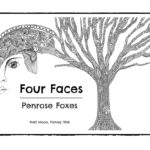Gojira in Defence of Kaiju Cinema – An Essay on Film
Gojira in defence of Kaiju Cinema
Introduction
Gojira (d. Ishiro Honda Japan 1954) gave us a monster, a pop icon and, as of today, a 28 film long film series – and there are plans for more! Gojira, more commonly known in the west as Godzilla, has not been seen too highly in the west. “Japanese creature features have been regarded as cheesy and childish, good for a laugh and a box office bang, but artistically lacking, intellectually unchallenging, and historically insignificant.”1 Although this author takes a stance not often taken by the Western audience, the level of further analysis is slim.2 However, he does highlight the stance many have taken with the film series. A film series that is internationally recognisable.3 Furthermore, Godzilla even has his own Hollywood star of fame.4 And yet, this is a film series that has been deemed historically insignificant and, despite the variations on the Kaiju (giant monsters), has been deemed artistically lacking. As for intellectually ‘unchallenging’, I would say they just haven’t given the franchise a series look. “In the original Mothra, human society had good reason to feel ashamed. The capitalist values of the “civilized” world had not only cruelly exploited the people of Infant Island, but virtually prohibited anyone from righting the obvious wrongs.”5 Here David Kalat comments on Mosura (d. Honda Japan 1961) in one of the few well thought out books on Gojira – A Critical History and Filmography of Toho’s Godzilla Series. Here he identifies one of the significant themes embodied by the film series and Mosura. In this essay, I would like to comment on Gojira, as well as the Gojira franchise, that has solidified his place in our culture. Recognising western attitudes to Gojira I would like to offer a defence for the franchise. In essence, the film series is powerful, but also considered to be ridiculous. I would like to explore what it is that makes Gojira ridiculous and whether it is intentional or not. Assuming that the films are ridiculous, I shall make a further defence – a defence of the ridiculous. As it is in the ridiculous that we dream – that the fantasy may be sublime.
American Monster Movies
Have you heard of It Came From Beneath the Sea (d. Robert Gordon USA 1955)? Or perhaps The Beast From 20,000 Fathoms (d. Eugène Lourié USA 1953)? What about King Kong (d. Merian C. Cooper, Ernest B. Shoedsack USA 1933)? These are all critically acclaimed monster movies by the west.678 However they are not dissimilar in many ways to the films that have made Gojira a landmark item. Picking on King Kong Jean Ferry writes in Concerning King Kong:
“To sum up, through the absurdity of its treatment (an inept script with numerous incoherent details), its violent, oneiric power (the horribly realistic representation of a common dream), its monstrous eroticism (the monster’s unbridled love for the woman, cannibalism, human sacrifice), the unreality of certain sets – or, if you are incapable of letting yourself be taken in by all that, by the acute sensation of unheimlich with which the presence of automata and trickery imbues the whole film – or better still, in combining all these values the film seems to correspond to all that we mean by the adjective “poetic” and in which we had the temerity to hope the cinema would be its most fertile native soil.”9
This account may seem shocking and indeed, I would say that many would disagree. However, if we were to treat King Kong as a realistic film and stretched our imagination to the inclusion of a 18ft+ ape (King Kong’s size changes throughout the film)10, Jean Ferry’s opinion would not be questionable. Jean Ferry writes the article from a Surrealist point of view and defending poetry in much the same manner.11 The implication, is that by poetic, he would refer to a glorification of the effect, without a sense of logical realism12. His comparison to a dream is not a bad way to understand his position. His ultimate position on King Kong, is that he would defend it from this position. King Kong is a fine example of a film completely absurd and it is in this absurdity that it entertains.
Western attitudes towards Gojira – What is ‘real‘?
However, if we were then to consider the Gojira film series, we could make some easy comparisons.
“One thing American audiences often misunderstand about Japanese fantasy films is that Western notions of realism are a cultural value not necessarily held by other peoples. Japanese art does not value “realism” as single-mindedly as Western Art Does. Japanese filmmakers recognize other values as well: beauty, interesting images, and spectacle. To criticize Japanese fantasy films for not being “realistic” is both to miss the point and miss the fun.”13
Commenting on the attitudes of many American audiences, David Kalat identifies some of the key issues surrounding the reception of the Gojira franchise. He also offers a definite reason why. The idea that ‘realism’ is approached differently by each culture. I would like to point out that ‘realism’, to a westerner, it is generally inferred that images are true to life and logically plausible. However, to Japanese filmmakers, it is generally inferred that images follow their own poetic logic and follow the films own logic. As an example, Toy Story (d. John Lasseter USA 1995)’s imagery aren’t true to life but follow its own sense of ‘realism’. Also, a film like Avatar (d. James Cameron USA/UK 2009) doesn’t encourage you to question whether it is possible to take another body, but encourages you to understand the films own logic – working under the premise that it is possible.
“Eiji Tsuburaya delivered evocative and poetic images. That the majority of his effects work is not “realistic” by Western standards does not reflect on his abilities, merely his priorities.”14 Here David Kalat, describes the work of the special effects director for most of the Gojira franchise from the showa era (1954-1975). Importantly, the Gojira franchise has different priorities to western films. Eiji Tsuburaya was more than able to craft western ‘realism’ with his effects but chose something poetic and comical – it was a stylistic choice. These ideas are a question of sensibilities. What western critics often miss, is the intentions of the filmmakers. The filmmakers were not intending for something realistically plausible, nor something that had completely true to life buildings and monsters – if you can have true to life monsters!
However cultural attitudes towards the Gojira franchise have never shown an understanding of the difference in sensibilities. For example, the review of Mosura tai Gojira (d. Ishiro Honda Japan 1964) in the New York Times, was far from a serious discussion of the film. The review focused more on the american title of ‘Godzilla vs the Thing‘ than anything within the film.15 This attitude of a lazy review just goes to show the lack of respect that was given to the film. Even now, western audiences still show a lack of understanding to these sensibilities and therefore a lack of respect. For example, ‘It’s a bad, bad, bad, bad Movie Godzilla Vs. Mothra (1964)’ offers a rather lazy review that only really gives an opinionated synopsis, whilst opening with a critique of the genre. “it’s hard to call a monster movie “bad” when the very genre admits and even revels in its badness.”16 There is no consideration of what the film attempts to achieve. Similarly, Dan Schneider writes in ‘Mothra Vs Godzilla’:
“Mothra Vs. Godzilla is simply a rather paint-by-numbers film, with (…) a rather ludicrous storyline: that the giant moth, Mothra, from It’s own titular 1961 film, would battle a huge, radioactive, fire-breathing dinosaur, and ultimately win. It’s another step down, film-wise, in the series.”17
These common misreadings of the film form the basis of western opinions on the franchise. It is only fairly recently, that any serious considerations have been taken upon the franchise. Mosura tai Gojira for example, holds a 89% rating on rottentomatoes.com.18
Gojira the absurd!
How can a film like King Kong be critically acclaimed whilst the Gojira franchise be shunned? Especially as King Kong is, actually quite an absurd tale as Jean Ferry earlier demonstrated. Most of the very qualities that make King Kong absurd are also within the Gojira franchise and actually forms the basis for a lot of their criticisms. Dan Schneider, as quoted above, exclaims that it isn’t possible for a ‘giant moth’ to win over a ‘huge, radioactive, fire-breathing dinosaur’. Indeed that a ‘huge, radioactive, fire-breathing dinosaur’ exists in the first place, is the stuff of nightmares. Gojira is frequently depicted as an unstoppable killing machine, his size and physical prowess equally measured by his deadly atomic breath (he doesn’t actually breath fire) – which is absurd! In fact, despite humanities/aliens/kaiju’s efforts, Gojira has only ‘died’ twice (despite the ‘death’ he returns not long afterwards), and David Kalat also recounts: “recurring series character actor Koichi Ueda, declaims, “As we know from experience, when Godzilla is attacked he advances instead of retreats,” stopping short of adding, “unlike that other Godzilla”.”19 This comparison highlights Gojira’s unrealistically nightmarish capabilities. Also, as previously stated, the imagery and special effects were purposefully chosen to be the way they are – without “Realism”. Gojira is absurd down to his very image!
Jean Ferry offers many reasons why King Kong is an absurd story, among them there is “(g) It’s absurd that King Kong, escaping from the theater where he is on show, so easily rediscovers the woman he seeks.”20 Likewise, it has already been discussed that the existence of monsters, and why one could defeat the other, could be considered absurd. I would also offer that it is absurd that in Kaiju Daisenso (d. Ishiro Honda Japan 1964) that Gojira and Rodan could be so easily transported through space, or that any monsters could be controlled – also a feature of Kaiju Soshingeki (d. Ishiro Honda Japan 1968) and Gojira tai kingu Ghidora (d. Kazuki Omori Japan 1992) amongst others. It is absurd that Gojira could fly using his breath, a feature of Gojira tai Hedora (d. Yoshimitsu Banno Japan 1971). It is also absurd that Ebirah could be evaded using a berry juice and that the slaves used to make it, didn’t realise they could switch the berries for the leaves and it would no longer be effective, until half way through the film, a feature of Gojira, Ebirah, Mosura: Nankai no dai Ketto (d. Jun Fukuda Japan 1966). David Kalat notes my favourite absurdity in Gojira tai Kingu Ghidora, however, after removing Gojira from their timeline: “When a new Godzilla appears, everyone’s first reaction isn’t “What’s that?”; instead they compare its size and ferocity with the one they remember, from a time now undone.”21
Conclusion
Gojira’s absurdities are numerous but most importantly they are intentional. “Tsuburaya objected to using footage of a real horse matted into the suitmation scenes, although he could easily have achieved it. Instead, he insisted on using a much less convincing puppet horse, because, “It’s funny.””22 This demonstrates some of the intentions of the effects sequences. They had their own style. Entertaining, poetic imagery was preferable to ‘realism’. Some of the narrative developments and concepts within the Gojira franchise was absurd for comedy, poetry and at times to be like a nightmare. Unfortunately this is a tone that most westerners do not understand. This does not make them bad films just films that some may not like. It is this tone that has solidified Gojira’s place in film history and earned him his Star on the Hollywood walk of fame. This has also earned him, his 28 strong film series. Personally, I would choose an absurd, poetic nightmare over ‘realism’ any and every time.
1Berra, John (Ed) ‘Kaiju Eiga/Monster Movies’ in Japan Directory of World Cinema. Intellect, 2010. Pp 206-225. pp207.
3Author Unknown. ‘Popular Culture and Japan’s Gross National Cool’ on japansociety.org, at: http://aboutjapan.japansociety.org/content.cfm/popular_culture_and_japans_gross_national_cool About Japan Editors. N.p. 02.06.2008. Web. (12.03.2013 Accessed)
4Author Unknown. ‘Godzilla gets a star on Walk of Fame’ on nbcnews.com at http://www.nbcnews.com/id/6291273/site/todayshow/ns/today-entertainment/t/godzilla-gets-star-walk-fame/#.UUDynjnaYy4 Associated Press. 20.10.2004. Web. (12.03.2013 Accessed)
5Kalat, David. A Critical History and Filmography of Toho’s Godzilla Series. McFarland & Company, Inc, Publishers, 2010 (2nd Edition). pp68
6’It Came From Beneath the Sea (2007)’ on rottentomatoes.com, at: http://www.rottentomatoes.com/m/it_came_from_beneath_the_sea/ N.p. n.d. Web (12.03.2013 Accessed)
7’The Beast From 20,000 Fathoms (1953)’ on rottentomatoes.com, at: http://www.rottentomatoes.com/m/beast_from_20000_fathoms/ N.p. n.d. Web (12.03.2013 Accessed)
8’King Kong (1933)’ on rottentomatoes.com, at: http://www.rottentomatoes.com/m/1011615-king_kong/ N.p. n.d. Web (12.03.2013 Accessed)
9Ferry, Jean. ‘Concerning Kong’ in Hammond, Paul (Ed) The Shadow and its Shadow: Surrealist Writings on the Cinema. City Lights Books, 2000 (3rd Edition). Pp161-165: pp164.
12 Forgive me this is a gross simplification. I simply wish to highlight Surrealism’s interests “especially in thought freed from the usual constraints of convention, logic, morality”, as spoken by the following source. Gullette, Alan. ‘The Theory and Techniques of Surrealist Poetry’ on alangullette.com, at: http://alangullette.com/essays/lit/surreal.htm University of Tennessee Knoxville, Spring 1979. Web. (25.03.2013 Accessed)
13Kalat, David. A Critical History and Filmography of Toho’s Godzilla Series. McFarland & Company, Inc, Publishers, 2010 (2nd Edition). Pp62.
15Eugene, Archer. ‘Godzilla vs the Thing (1964)’ on nytimes.com, at: http://movies.nytimes.com/movie/review?res=9A06E2DD123CEE32A25755C2A9679D946591D6CF New York Times. 16.11.1964 Web. (30.03.2013 Accessed)
16Author Unknown. ‘Godzilla vs. Mothra (1964)’ on rinkworks.com, at: http://www.rinkworks.com/badmovie/m/godzilla.vs.mothra.1964.shtml N.p. N.d. Web. (30.03.2013 Accessed)
17Schneider, Dan. ‘Mothra Vs Godzilla’ on thespinningimage.co.uk, at: http://www.thespinningimage.co.uk/cultfilms/displaycultfilm.asp?reviewid=5712 N.p. N.d. Web. (30.03.2013 Accessed)
18’Mosura tai Gojira 1964′ on rottentomatoes.com, at: http://www.rottentomatoes.com/m/mosura_tai_gojira_1964/ N.p. N.d. Web. (30.03.2013 Accessed)
19Kalat, David. A Critical History and Filmography of Toho’s Godzilla Series. McFarland & Company, Inc, Publishers, 2010 (2nd Edition). Pp231
20Ferry, Jean. ‘Concerning Kong’ in Hammond, Paul (Ed) The Shadow and its Shadow: Surrealist Writings on the Cinema. City Lights Books, 2000 (3rd Edition). Pp161-165: pp162
21Kalat, David. A Critical History and Filmography of Toho’s Godzilla Series. McFarland & Company, Inc, Publishers, 2010 (2nd Edition). Pp180.
Further Reading
Berra, John (Ed) ‘Kaiju Eiga/Monster Movies’ in Japan Directory of World Cinema. Intellect, 2010. Pp 206-225
Ferry, Jean. ‘Concerning Kong’ in Hammond, Paul (Ed) The Shadow and its Shadow: Surrealist Writings on the Cinema. City Lights Books, 2000 (3rd Edition). Pp161-165
Kalat, David. A Critical History and Filmography of Toho’s Godzilla Series. McFarland & Company, Inc, Publishers, 2010 (2nd Edition).
Tsutsui, William M. Godzilla on My Mind: Fifty Years of the King of Monsters. Palgrave MacMillan, 2004.
Author Unknown. ‘Godzilla gets a star on Walk of Fame’ on nbcnews.com at http://www.nbcnews.com/id/6291273/site/todayshow/ns/today-entertainment/t/godzilla-gets-star-walk-fame/#.UUDynjnaYy4 Associated Press. 20.10.2004. Web. (12.03.2013 Accessed)
Author Unknown. ‘Godzilla vs. Mothra (1964)’ on rinkworks.com, at: http://www.rinkworks.com/badmovie/m/godzilla.vs.mothra.1964.shtml N.p. N.d. Web. (30.03.2013 Accessed)
Author Unknown. ‘Popular Culture and Japan’s Gross National Cool’ on japansociety.org, at: http://aboutjapan.japansociety.org/content.cfm/popular_culture_and_japans_gross_national_cool About Japan Editors. N.p. 02.06.2008. Web. (12.03.2013 Accessed)
Eugene, Archer. ‘Godzilla vs the Thing (1964)’ on nytimes.com, at: http://movies.nytimes.com/movie/review?res=9A06E2DD123CEE32A25755C2A9679D946591D6CF New York Times. 16.11.1964 Web. (30.03.2013 Accessed)
Gullette, Alan. ‘The Theory and Techniques of Surrealist Poetry’ on alangullette.com, at: http://alangullette.com/essays/lit/surreal.htm University of Tennessee Knoxville, Spring 1979. Web. (25.03.2013 Accessed)
‘It Came From Beneath the Sea (2007)’ on rottentomatoes.com, at: http://www.rottentomatoes.com/m/it_came_from_beneath_the_sea/ N.p. n.d. Web (12.03.2013 Accessed)
‘King Kong (1933)’ on rottentomatoes.com, at: http://www.rottentomatoes.com/m/1011615-king_kong/ N.p. n.d. Web (12.03.2013 Accessed)
Mosura tai Gojira 1964′ on rottentomatoes.com, at: http://www.rottentomatoes.com/m/mosura_tai_gojira_1964/ N.p. N.d. Web. (30.03.2013 Accessed)
Schneider, Dan. ‘Mothra Vs Godzilla’ on thespinningimage.co.uk, at: http://www.thespinningimage.co.uk/cultfilms/displaycultfilm.asp?reviewid=5712 N.p. N.d. Web. (30.03.2013 Accessed)
‘The Beast From 20,000 Fathoms (1953)’ on rottentomatoes.com, at: http://www.rottentomatoes.com/m/beast_from_20000_fathoms/ N.p. n.d. Web (12.03.2013 Accessed)
Cultural Attitudes Behind Godzilla
Mothra Vs Godzilla on notcoming
notcoming.com – includes many reviews of the Gojira franchise
Gojira Filmography:
San daikaiju: chikyu- sadai no kessen
Gojira, Ebirah, Mosura: nankai no daiketto
kaiju-to- no kessen: Gojira no musuko
Gojira-Minira-Gabara: Oru Kaiju daishingeki
Chikyu- kogeki meirei: Gojira tai Gaigan
Gojira tai Megagirasu: Ji- sho-metsu sakusen
Gojira, Mosura, Kingu Gidora: daikaiju so-ko-geki
Gojira tai Mosura tai Mekagojira: To-kyo- S.O.S.
Unmentionable:
Upcoming:
Other Kaiju Films (an incomplete list):
Furankenshutain tai chitei kaiju- Baragon
Monster Movies:
King Kong 1933
King Kong 1976
King Kong 2005
Other Fun Stuff:
Godzilla on the Simpsons Full Episode
Mecha Streisand Full First Season Episode
Jurassic Park: The Lost World 40 Seconds







Leave a Reply